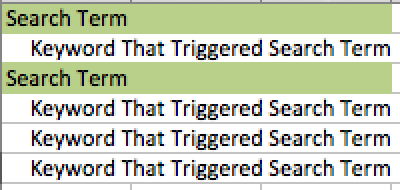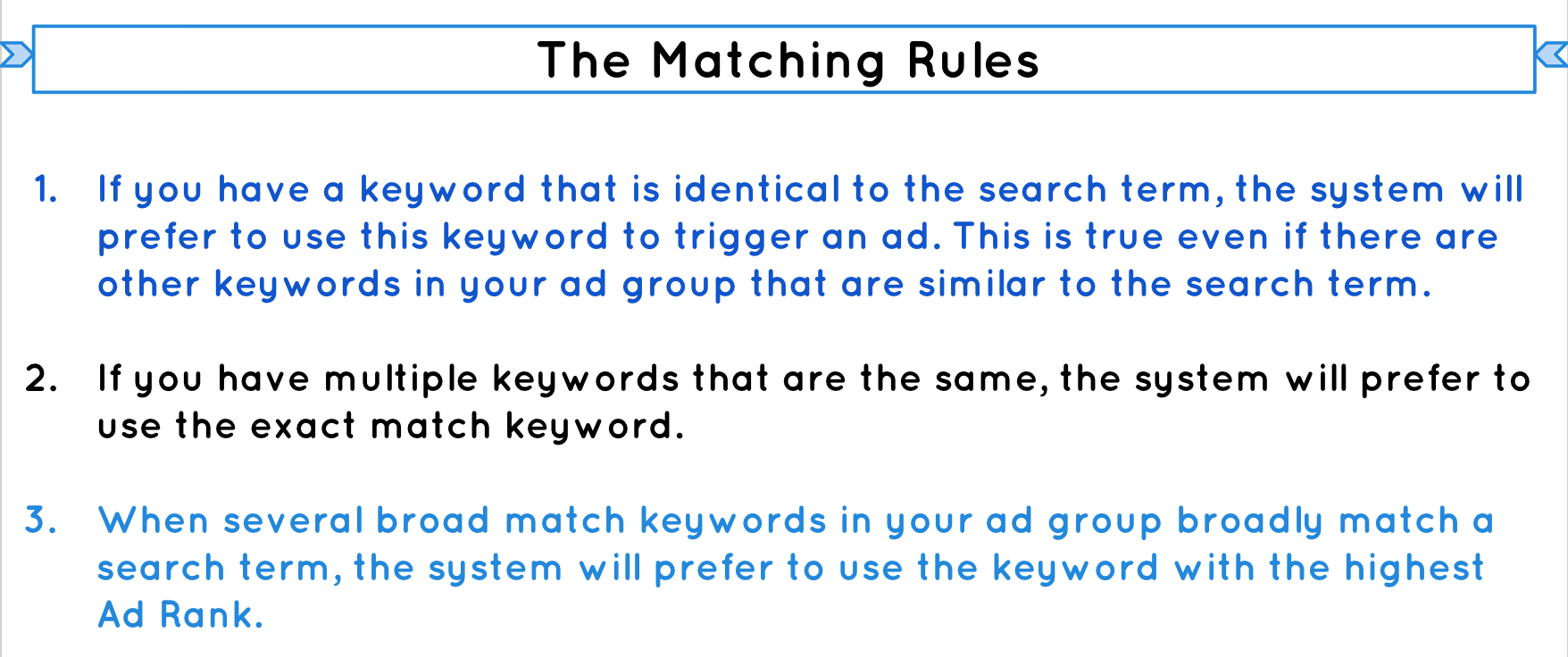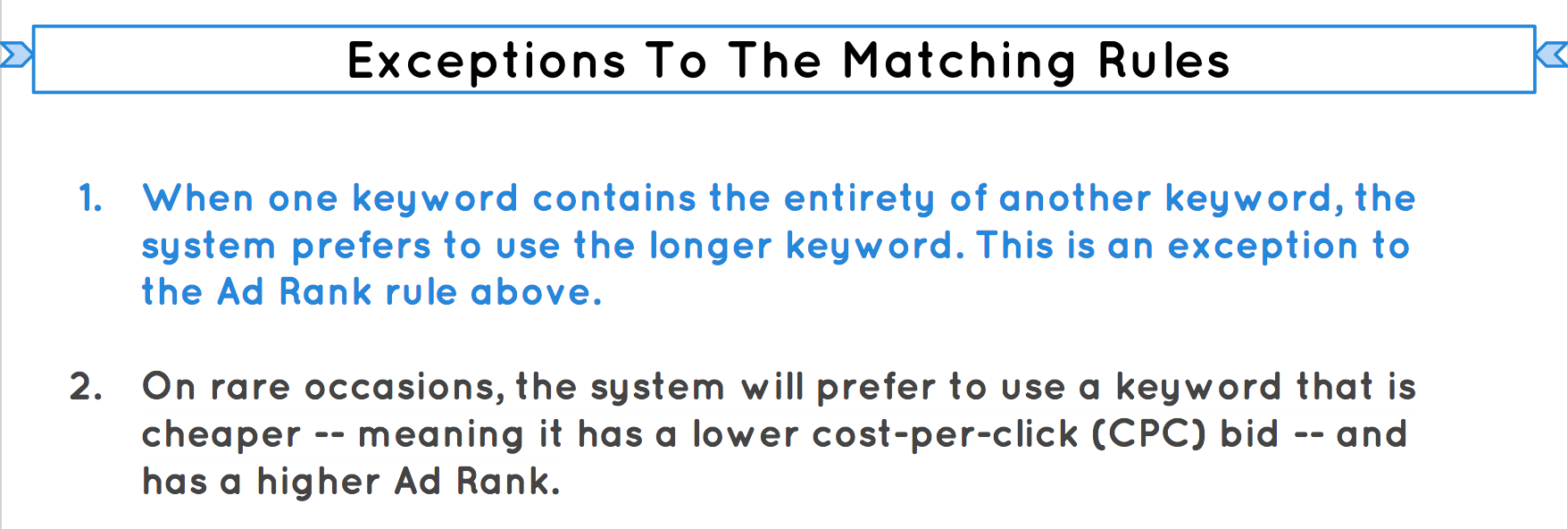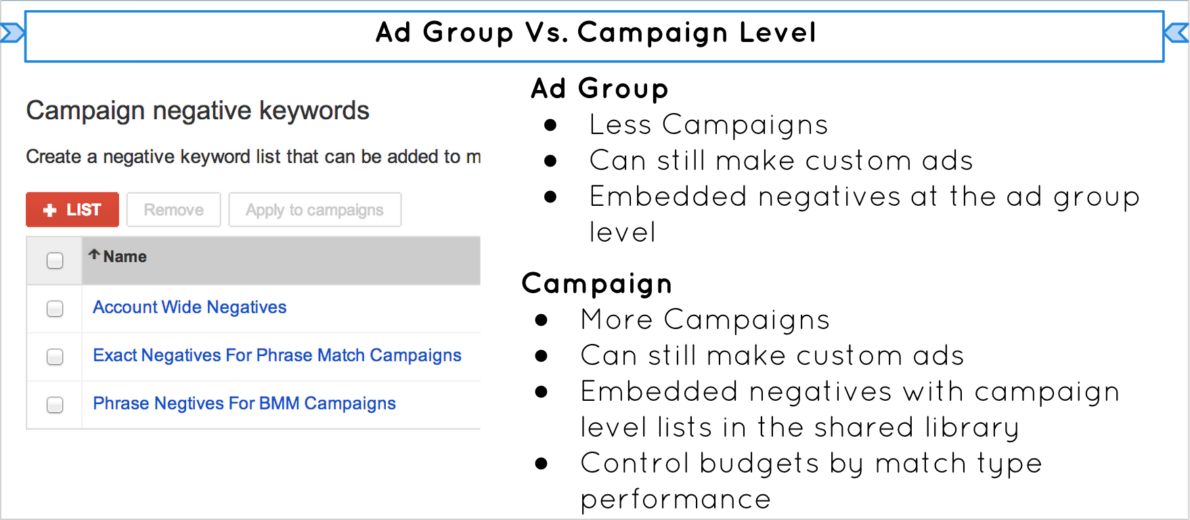There have been many debates recently in our agency and here on PPC Hero over match type segmentation. It’s not surprising that people get heated when hearing that their way isn’t best. I suggest that every Account Manager should do what they feel works best, but there are many factors to consider when deciding the best option.
There is often a good reason that advertisers should segment by match type. Below are the three main reasons for considering match type segmentation.
1) Control Which Match Type Triggers Queries Through Embedded Negatives
A search query can trigger many different keywords, depending on the breadth of keywords in your account. Here’s a made-up example:
You can check your own account for match type cross-pollution. Follow these steps:
a) Go to the search terms report for the past 30 days
b) Add the “Keyword” column
c) Download & delete the report dates
d) Run a pivot table, dropping “Search Term” and then “Keyword” into the row labels
The results will look like this:

So, what’s the big deal?
There’s a chance search terms aren’t being triggered by the most relevant keywords, and therefore not getting the best ad and landing page experience, ultimately effecting your CTR, CPC, QS, etc. Is this actually true, though? Let’s review the rules of how Google matches a search query. Just like the laws of robotics, there are three of them.

However, there are two important exceptions to these rules.

What do these look like in practice? We can find out by examining one of those search term to keywords pivot tables. I changed a few words around to make the data anonymous, but I kept the changes consistent so the conclusions are the same.
![]()
We can see out of the 120 impressions, 90 went to the most closely matched exact match. However, 10 impressions went to a broad match with a much higher CPC, but higher avg. position. This instance cost the account more money than if it had matched with the exact match, but achieved a higher ad rank. However, this does appear to break the matching rules, unless that campaign that houses the exact match had ran out of budget for the day.
The 20 impressions to the other broad match makes sense, as it had a much lower CPC with a higher ad rank. However, I can imagine since the two keywords are in different ad groups, the ad and landing page in the Vitamin Pills ad group was much more relevant than that of the Healthy Pills ad group. It does have a lower CTR than the impressions matched to the broad keywords.
To prevent this scenario from happening, you’d want to create negative keywords of search terms that should be funneled elsewhere for each ad group or campaign. For instance, if [best vitamin pills] were a negative keyword for the Get Healthy and Healthy Pills ad groups, it would be sure to funnel search queries to the Vitamin Pills ad group.
2) Control Budgets For Keyword Mining (Broad) vs. Exact
A lot of debate circles around whether you should run match type segmentation at the ad group or campaign level. Here’s the breakdown between the two:

If you are at ALL limited by budget or have tight ROAS/CPA goals, it would benefit you to do it at the campaign level. Below is one of my account’s match type performance break-down. You can see exact match has the lowest cost per conversion. Being able to give it more budget over other match types would benefit this account.

However, if that doesn’t describe you, and you don’t mind managing negatives at the ad group level (I personal think that’s SUCH a pain compared to the ability to have campaign level negative lists in the shared library), then it’s really just a matter of personal preference.
3) Serve Specific Ads And Use Specific Landing Pages For Match Type Variations
This one is pretty self-explanatory. If you have lots of different landing pages, like eComm sites, you may want to send broad match keywords to category pages and exact matches to specific item pages. You might also want to test different ad copy based on search intent, which is better controlled through match types.
Eric and I have both written articles about this topic recently that you could also check out.
Conclusion
Those are the three big reasons for segmenting by match type in your account structures. With the recent news about close variants, if you find they perform poorly in your account, you’ll have a fourth good reason to segment by match type. Add those misspelled keywords and close variants as negatives to your exact and phrase match ad groups or campaigns!
What is your preferred method for dealing with match type segmentation, or do you not deal with it? And of course, why?!




